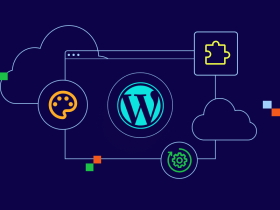Website technology is advancing rapidly, creating both opportunities and challenges for B2B SaaS companies. You’re facing intense pressure to keep your digital presence cutting-edge while maintaining focus on your core product.
The gap between standard websites and truly effective ones continues to widen, directly impacting your ability to convert visitors and retain customers.
Staying informed about emerging web development trends helps you make strategic decisions about your online presence without getting distracted by passing fads.
This article will walk you through the key trends shaping website development USA and show you how to adapt to these changes.
Responsive and Mobile-First Design
With increasing mobile internet usage, having a mobile-first, responsive website design is now essential. This ensures your website is accessible and performs well on any device, especially for B2B SaaS companies targeting a wide audience.
- Mobile Optimization: Google’s mobile-first indexing means that your mobile site is the most important version for SEO. A mobile-first design ensures that visitors on smartphones or tablets get the same smooth experience as those on desktops.
- Enhanced User Experience: A responsive website adapts its layout to different screen sizes, making navigation intuitive and fast on any device. This reduces bounce rates and improves conversion rates.
- Faster Load Times: Mobile-first design forces developers to optimize images, scripts, and resources to ensure fast load times, which is essential for user retention and SEO.
The Rise of No-Code/Low-Code Platforms
No-code and low-code development platforms like Webflow are transforming how websites are built, making it easier for SaaS companies to create and launch websites quickly without needing in-depth coding skills.
- Faster Development: No-code platforms allow businesses to create websites and applications faster using drag-and-drop tools and pre-built templates. This can significantly reduce time-to-market for new products or features.
- Cost-Effective: Low-code platforms offer the flexibility of custom development while reducing the need for a large development team, making them an attractive option for startups with limited budgets.
- Greater Accessibility: These platforms democratize web development, allowing non-developers to create and manage websites, empowering business owners to take control of their online presence.
Progressive Web Applications (PWAs)
The line between websites and native applications continues to blur as PWAs gain traction across the B2B SaaS sector. These applications deliver app-like experiences through web browsers, offering significant advantages for SaaS providers.
- Offline Functionality: PWAs can work with limited or no connectivity, allowing users to access critical features regardless of their internet situation
- Faster Load Times: Through advanced caching techniques, PWAs deliver near-instantaneous loading after the first visit
- Reduced Development Costs: Building a single PWA often proves more cost-effective than developing separate web and mobile platforms
- Improved User Engagement: Push notifications and home screen installation drive higher return visits and user interaction
API-First Development
Modern websites are increasingly built as interconnected systems rather than standalone entities. This shift toward API-first development has transformed how SaaS companies approach their web presence.
API-first development prioritizes building robust application programming interfaces before creating the front-end experience. This approach offers:
- Greater Flexibility: Updates to visual elements can happen independently from backend changes
- Seamless Integration: Your website connects more easily with third-party services and your own product
- Improved Scalability: Backend systems can be optimized separately from consumer-facing components
- Future-Proofing: As new channels emerge, your content and data can be repurposed without rebuilding
Headless CMS Architecture
Building on the API-first approach, headless CMS systems have revolutionized content management for SaaS websites. Unlike traditional systems that combine content storage and presentation, headless platforms separate these functions entirely.
- Content Delivery Flexibility: The same content can be formatted for websites, apps, kiosks, or any digital channel
- Developer Freedom: Frontend teams can use modern frameworks like React or Vue without CMS constraints
- Performance Improvements: Streamlined content delivery networks optimize loading times
- Enhanced Security: Reduced attack surfaces minimize vulnerability to common exploit methods
WebAssembly for High-Performance Functions
For computation-heavy SaaS applications, WebAssembly (WASM) is transforming what’s possible within browsers. This binary instruction format enables near-native speed for web applications, opening new possibilities for browser-based tools.
- Superior Performance: Execute complex operations at speeds approaching native applications
- Language Flexibility: Develop high-performance components in languages like C++, Rust, or Go
- Enhanced User Experience: Run sophisticated features without noticeable lag or delays
- Reduced Server Load: Shift computational tasks to client devices when appropriate
Micro-Frontends Architecture
Just as microservices revolutionized backend development, micro-frontends are reshaping how complex B2B SaaS websites are built and maintained. This architectural approach breaks down web interfaces into independently deployable components.
- Team Autonomy: Different teams can work on separate sections without coordination bottlenecks
- Incremental Updates: Individual components can be updated without redeploying the entire site
- Technology Diversity: Each micro-frontend can use the most appropriate framework for its purpose
- Enhanced Resilience: Issues in one component are less likely to affect others
Voice User Interfaces and Conversational AI
As voice technology matures, incorporating voice interfaces into web experiences has become increasingly practical for B2B applications. Forward-thinking SaaS companies are adding voice capabilities to streamline specific user journeys.
- Hands-Free Operation: Users can interact with your platform while engaged in other tasks
- Accessibility Improvements: Voice interfaces make your application more usable for people with disabilities
- Streamlined Complex Processes: Voice commands can simplify multi-step procedures
- Natural Language Queries: Users can request information using conversational language
While full voice control may not suit every B2B SaaS application, targeted implementation of voice features can significantly enhance user experience, particularly for reporting functions, data queries, and system navigation.
Website development specialists are finding creative ways to implement these features without disrupting traditional interfaces.
Wrap Up
By strategically adopting these trends, B2B SaaS companies can create digital experiences that complement their core products while delivering exceptional value to users. The key lies not in chasing every trend but in selecting those that align with your specific business objectives and user needs.
At Beetle Beetle, we specialize in helping B2B SaaS companies integrate the latest web development trends into custom solutions. As certified Webflow partners, we deliver high-performance websites that are not only visually stunning but also fast, responsive, and optimized for conversions.
Let’s build a website that works for your business.
Book a clarity call today for more details about our web development services.










